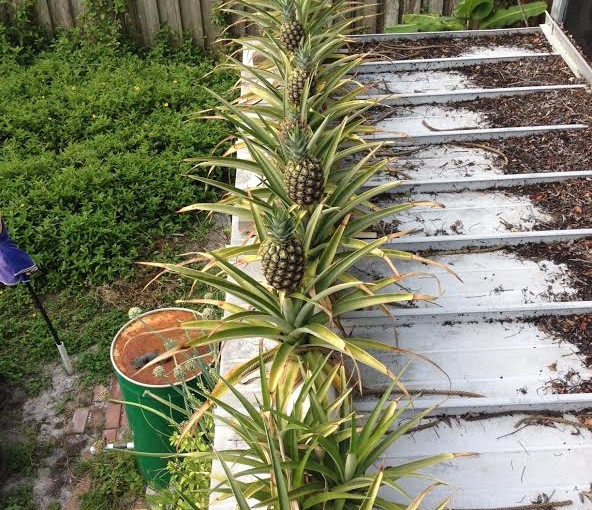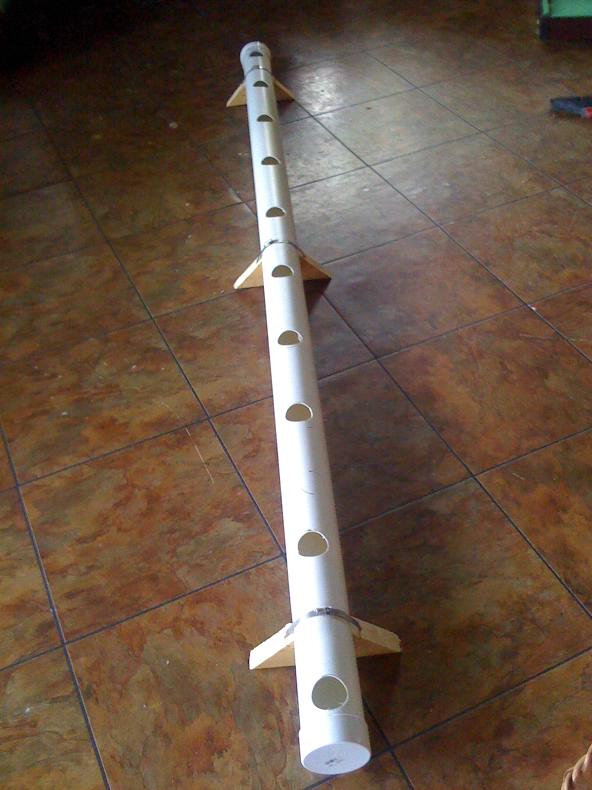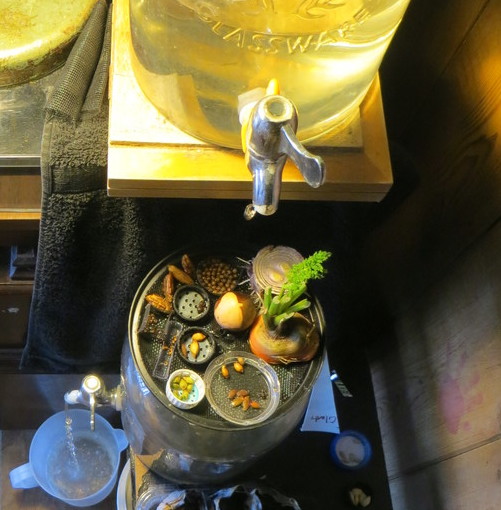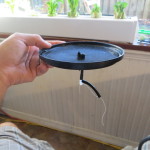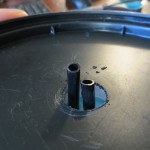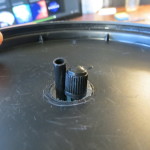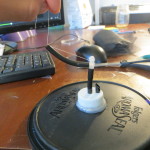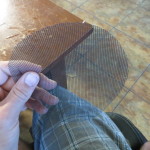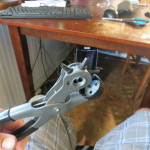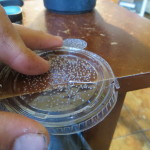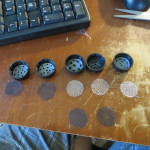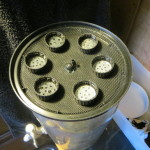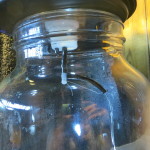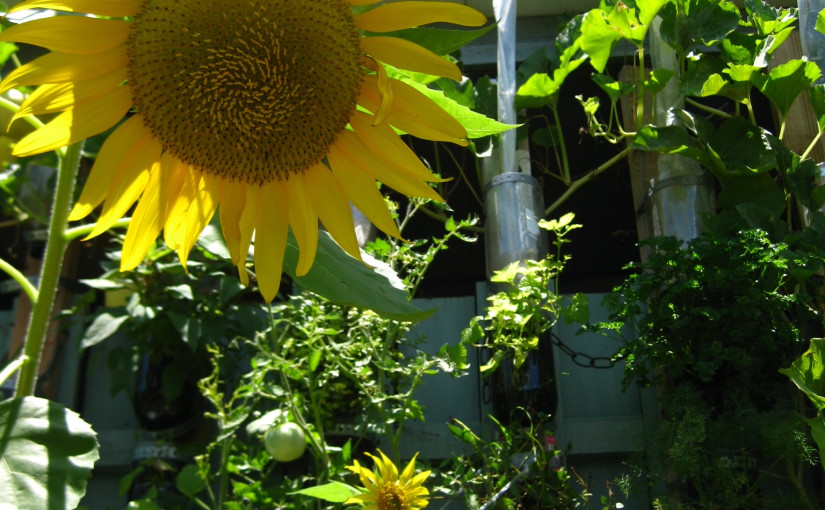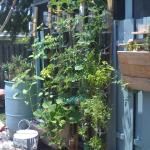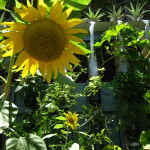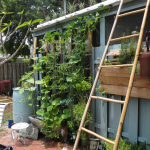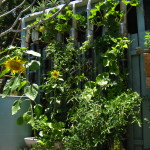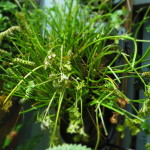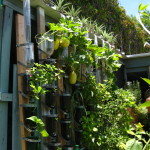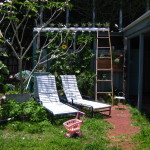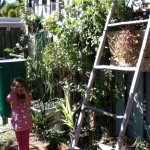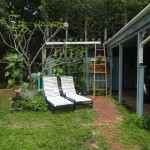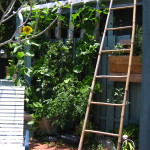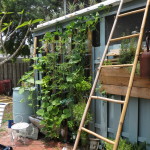For a while I’ve been watching my Dad start pineapple tops in Tupperware containers. I was surprised that the plants didn’t die over time because they were basically just in water and some miracle grow. I wondered if the pineapples would fruit in these containers and wondered if I could just stick a bunch of pineapple tops in a half-filled-with-water main drain pipe. I decided to try it and made this:
The stands were made with 2 wedges. I fed each hoseclamp around the pipe, through the holes in the wedges, and tightened.
I realized I could use the pipe to distribute water to my 2 liter garden. The idea was to pump rainwater into the pipe and let it fill up halfway where some tiny holes are drilled and let the water overflow into each 2 liter column. The watering method works well and I still water this way a year later.
Over time and research I decided the water would become anaerobic and the pineapples would eventually die due to stagnation. But I left everything as is because it functions to water the rest of my garden. I read from multiple sources that it would take up to 2 years for pineapples to start fruiting, but to my surprise 4 plants had set fruit the following spring. Here’s what it looks like now in May:

Early on I was pumping up either miracle grow or compost tea, but I got lazy and every since I’ve only been pumping up rainwater. I don’t expect the pineapples to taste very good because they are pretty deprived, but I guess I won’t know until I try them. We’ll see how big they get come fall.
Since this design I found using 4×4 PVC fence post is a curious alternative to main drain sewer pipe because you don’t have to design feet for stability. I realize there are better, more suitable materials for growing plants but PVC pipe is cheap and people use it.
One day I’ll try aquaponics and likely have pineapples on the roof running the the entire perimeter of my house. I’m sure they would grow very well :)
